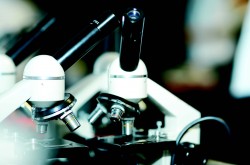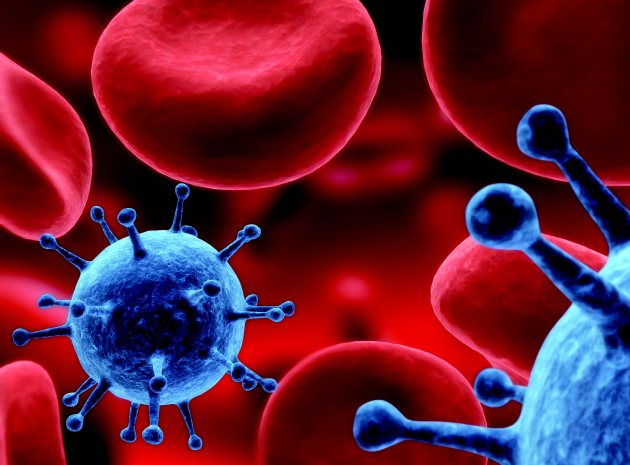
Today you will…
Learn about the different types of pathogen that can cause illnesses and about the body’s defences against illness and disease.
Investigate how to limit the spread of disease and the different methods of intervening with vaccines and drug treatments.
Begin to appreciate the problems associated with new strains of resistant pathogens such as mrsa and how we can halt the spread of disease.
“The winter vomiting bug has hit over million already this winter – what can we do to stop it in its tracks?”
“GPs turn to old swine flu vaccine as seasonal flu death toll hits 50…”
“It’s shut down schools, closed oil rigs and forced cruise ships back to dock early, but what exactly is the norovirus?”
“Antibiotic ‘apocalypse’ warning…”
The above are newspaper headlines from January 2013. This type of alarm is becoming more and more commonplace in the media, but is there a real reason to worry or panic, and what can we do about it? This lesson plan will inspire pupils to dig beneath the scare stories and identify both genuine areas of concern, and ways in which these could be addressed. Strong cross-curricular links with English, history and drama are encouraged, with learners enjoying acting out some scenes in gruesome detail!
Starter activity
Microbe modelling
Introduce students to the main types of pathogen that invade the body to cause illness including bacteria and viruses. A fun activity for students is to design their own pathogen using modelling materials. Encourage them to look at images of real pathogens and to conduct some research in order to choose a pathogen to model. Example websites containing suitable images, including electron microscopy, include BBC GCSE Bitesize [Additional Resource 1] and the Association of the British Pharmaceutical Industry’s web resources for schools [AR 2]. A wonderful resource from the Society for General Microbiology is Microbe Passport [AR3] where students learn about animated microbes through an imaginary microscope. Other microorganisms that are interesting to study include fungi, which can be both helpful and harmful in the body. Use microscopy with yeast and warm sugar solution to investigate fungal reproduction by budding. Planet Science suggests an interesting context involving ancient Egypt [AR 4]. Experiments with yeast are particularly useful because the action of yeast is also visible to the naked eye. Bread making is a popular way of looking at the positive ways in which microorganisms are used.
Main Activities
1. Microbiology
Many organisms can be prevented from entering our body by using good hygiene. Students will enjoy a visual and practical demonstration of this by undertaking their own microbiology. This can be done safely and to great effect in the classroom by culturing agar plates with fingerprints from before and after hand washing. Resources to enable schools to perform a range of microbiology practicals safely are available on the teachers area of the Society for General Microbiology website [AR 5]. I would introduce an interesting context such as reducing the spread of winter vomiting (norovirus) by telling students they have to produce a presentation to cruise ship passengers that promotes hand washing. Learners could also produce posters to be displayed on decks or in cabins. They could even photograph their own agar plates as ‘propaganda’. As an extension to this activity, pupils can also use cultured plates in order to investigate the effectiveness of different hand soaps in killing bacteria by measuring the inhibition zones around the plates after incubation. Ask them to imagine their school wants to introduce a new hand gel or soap in the toilets; can they act as consultants and recommend the best product?
2. The speckled monster
Vaccination, whether against flu or the MMR, is a vital tool in disease prevention. One of its greatest successes is the almost worldwide eradication of smallpox, ‘the speckled monster’. The history of this success is fascinating, with the disease having first been documented in ancient Egypt in the mummified remains of Rameses V. The speckled monster has a long history of infecting humans until the link between smallpox and cowpox was discovered, and this is given comprehensively on the BBC’s history website [AR 6]. Split the class into groups and ask each group to act out a mini scene from the history of smallpox. You could begin by giving them fact cards printed out from under the headings on the BBC article, but then ask them to widen their research using the internet at home or in school. More able students may even act out and rehearse a script. Some pupils will particularly enjoy acting out the symptoms of a gruesome death! Could students use a cross curricular link with drama to perform their play to other groups of learners in the school?
Home learning
1. Snot and gunge
Conditions in your body are perfect for bacteria to grow and viruses to multiply. How does your body protect itself? Students could link this with the keeping healthy aim of investigating the minerals and vitamins you need to keep your immune system healthy. More able students could describe what happens when immune systems begin to fail, including the effect of HIV.
2. Antibiotic awareness
Design a poster or leaflet for the GP surgery explaining why it is important that patients only get antibiotics when they are needed and that you should always finish a course of antibiotics. Could your local doctors’ surgery display the winners and run the activity as a competition?
Summary
Doctor doctor
Within the media there is often panic about disease. As recently as 23 January the BBC published an article entitled “Antibiotic ‘apocalypse’ warning” [AR 7]. Antibiotics are one of modern medicine’s most profound successes. But their widespread use could become their downfall. Only the superdrugs, the strongest antibiotics we have, retain any effectiveness against some dangerous bacteria such as tuberculosis and MRSA – but the more we use them the greater the risk of the superbugs mutating and becoming even more resistant to treatment. The two main ways we encourage resistance are by using antibiotics when they are not needed – such as when infected by a virus – and also by not finishing a prescribed course. Doctors are therefore at the front line in the continuing success in our fight against the superdrugs. Divide students into pairs and supply them with patient and doctor cards. On the former you can write the symptoms and type of illness the patient has. The doctor then has to decide whether to prescribe nothing, prescribe painkillers, send the patient for tests, call for an ambulance, or prescribe antibiotics. Give the patient the correct course of action at the bottom of their card to feedback to the doctor before swapping over.
Key resource
Bring science lessons to life with arkive.org – the ultimate multimedia guide to the natural world. With over 100,000 amazing photos and videos, games and free teaching resources, arkive is a unique educational resource for science teachers.
Explore over 40 free, fun-packed, curriculum-linked teaching resources for 5 to 18 year olds, including lesson plans and activities covering key secondary science topics such as adaptation, food chains and classification.
Looking for a lesson for this national science and engineering week? engage students in a world of exploration and discovery with arkive’s latest ‘species discovery’ resource. Find free resources today at arkive.org/ts
About the expert
Dr Joanna L. Rhodes M.Chem, D.Phil, MRSC is a teacher of science at Shelley College, Huddersfield.
Info Bar
Additional resources
ar1: BBC GCSE Bitesize tinyurl.com/cdm8rhr
ar2: ABPI web resources tinyurl.com/anopeqh
ar3: Microbe passports tinyurl.com/bgz8xvn
ar4: Planet science “pasteur and plastic bags” tinyurl.com/8vjpzb9
ar5: The Society for General microbiology Teachers’ page tinyurl.com/atqulnx
ar6: BBC History website tinyurl.com/9jndxyk
ar7: BBC News website tinyurl.com/az2tt6d
ar8: Centers for Disease Control and Prevention tinyurl.com/acsp6z8
Stretch them further
The Spanish cucumber crisis in this epidemiology who-dunnit students attempt to halt the spread of e-coli across europe, interviewing their peers who have ‘contracted’ the disease to work out how the illness has spread, so you can stop the source before thousands of people are infected! This activity is incredibly fun to plan and execute with an able group of pupils. flip charts and a control centre add to the excitement as learners interview each other to discover what and where they have eaten, where they have travelled and whom they have met. Other contexts you could use include the spread of an outbreak of avian or swine flu or sars. Supporting epidemiology resources for the classroom, including ‘disease detectives’ are available from the centre for disease prevention [ar 8].










